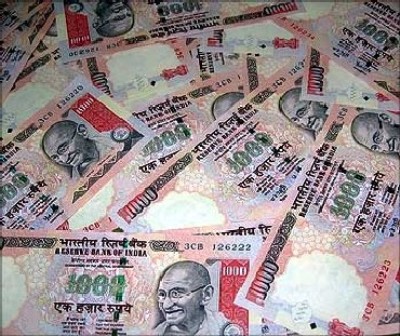N Sundaresha Subramanian and Deepak Korgaonkar in Mumbai
Small policyholders of the country's largest life insurer are carrying the can for the government's ambitious divestment programme.
Almost all of Life Insurance Corporation of India's investment calls in the government's divestment programme that restarted in 2009 have gone wrong, resulting in huge notional losses for policyholders in the underlying schemes.
. . .
LIC losses may be passed on to policyholders
According to data compiled by the BS Research Bureau, LIC has invested around Rs 12,400 crore (Rs 124 billion) in seven recent divestment issues since 2009, accounting for a quarter of more than Rs 45,000 crore (Rs 450 billion) through public offers in the past two years.
The BS Research Bureau compiled the data from the quarterly shareholding filings of 13 state-owned firms which participated in the disinvestment programme since 2009.
These holdings are worth Rs 9,379 crore (Rs 93.79 billion) at current prices.
On a cumulative basis, this investment has seen an erosion of 24.5 per cent till date, resulting in a notional loss of Rs 3,038 crore (Rs 30.38 billion).
. . .
LIC losses may be passed on to policyholders
Unless there is a dramatic turnaround in the markets, these losses will eventually get passed on to the policyholders who have purchased insurance policies and unit-linked investment plans.
This is excluding last week's last-minute investment in the Rs 12,766-crore (Rs 127.66 billion) offer for sale of ONGC shares.
Losses are expected to swell if the seven per cent post-auction fall in the explorer's share prices is taken into account.
LIC has been investing money collected from individuals in savings and insurance schemes, buying huge chunks of government shares in the disinvestment programme.
While the government insists the institution is investing by its 'investment rationale', there are not many takers for this theory.
. . .
LIC losses may be passed on to policyholders
Further, the results produced by the so-called 'investment rationale' speak for itself.
While the companies it had taken big bets on have seen their share prices tumble, at least four public offers the insurer avoided have performed very well.
Of the seven companies LIC bought stakes in, six are in the red. The biggest losses came in investments such as Shipping Corp (50 per cent), PTC India (41 per cent) and NMDC (39 per cent).
In terms of absolute losses, the NMDC investment saw the biggest erosion of Rs 2,293 crore (Rs 22.93 billion), followed by Rs 654 crore (Rs 6.54 billion) lost in NTPC.
In SJVN, which has lost a quarter of its value since its public issue, LIC's Market Plus 1 scheme held 47.5 million shares as of December 2011.
. . .
LIC losses may be passed on to policyholders
However, it is not clear what part of this stake was picked up in the said IPO.
Like in SJVN, the insurer has been trying to make amends by picking additional shares at lower prices in some other counters, too.
It has added nearly 56 million shares in Shipping Corporation, 23 million in NTPC and one million in NMDC, according to the shareholding data of these companies for the quarter ended December 2011.
Its only primary market investment in the green is the Rs 73-crore (Rs 730-million) investment in Power Grid Corp.
. . .
LIC losses may be passed on to policyholders
This investment has seen a gain of 22 per cent or Rs 17 crore (Rs 170 million).
One of the usual explanations has been the institution buys shares for the long term and that these offers provide it an opportunity to pick good stocks for the long term.
However, LIC did not buy shares in the biggest and most successful public issue of the country, Coal India, which has gained 35 per cent since.
Other successful issues such as OIL India, Rural Electrification and United Bank of India, which have given decent returns to investors, were also inexplicably shunned by the country's largest institutional investor.
. . .
LIC losses may be passed on to policyholders
On the contrary, these issues were lapped up by foreign institutions and private sector funds, who have laughed all the way to the bank.
An email sent to the LIC spokesperson seeking comments did not elicit any response.
In addition to the choice of stocks, the price at which these stocks were picked has also raised eyebrows in the analyst community.
Several analysts have questioned the insurer's rationale of picking the ONGC stock, which did not see enough demand at the floor price of Rs 290, at a substantially higher price.
The average price of the sale, in which LIC is said to have bought nearly 400 million shares, was Rs 303.
. . .
LIC losses may be passed on to policyholders
The ONGC sale is fresh in the mind, but LIC has been the lender of last resort for the government's divestment programme ever since it began in mid-2009 after the United Progressive Alliance returned to power, but without the support of Left parties.
The first crisis call came to LIC in early 2010, when the government was pushing the sale of NTPC through a follow-on public offer.
The rescue story continued as the insurer picked over 168 million shares in the NMDC FPO, steeply priced at Rs 300.
Both these shares are trading much below the FPO levels at Rs 178 and Rs 184, respectively.
Engineers India, which offered shares at Rs 290, is now trading at Rs 273.70.










article